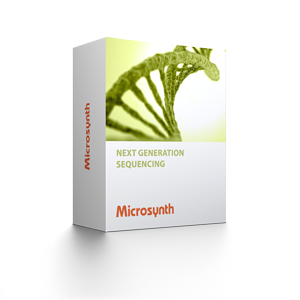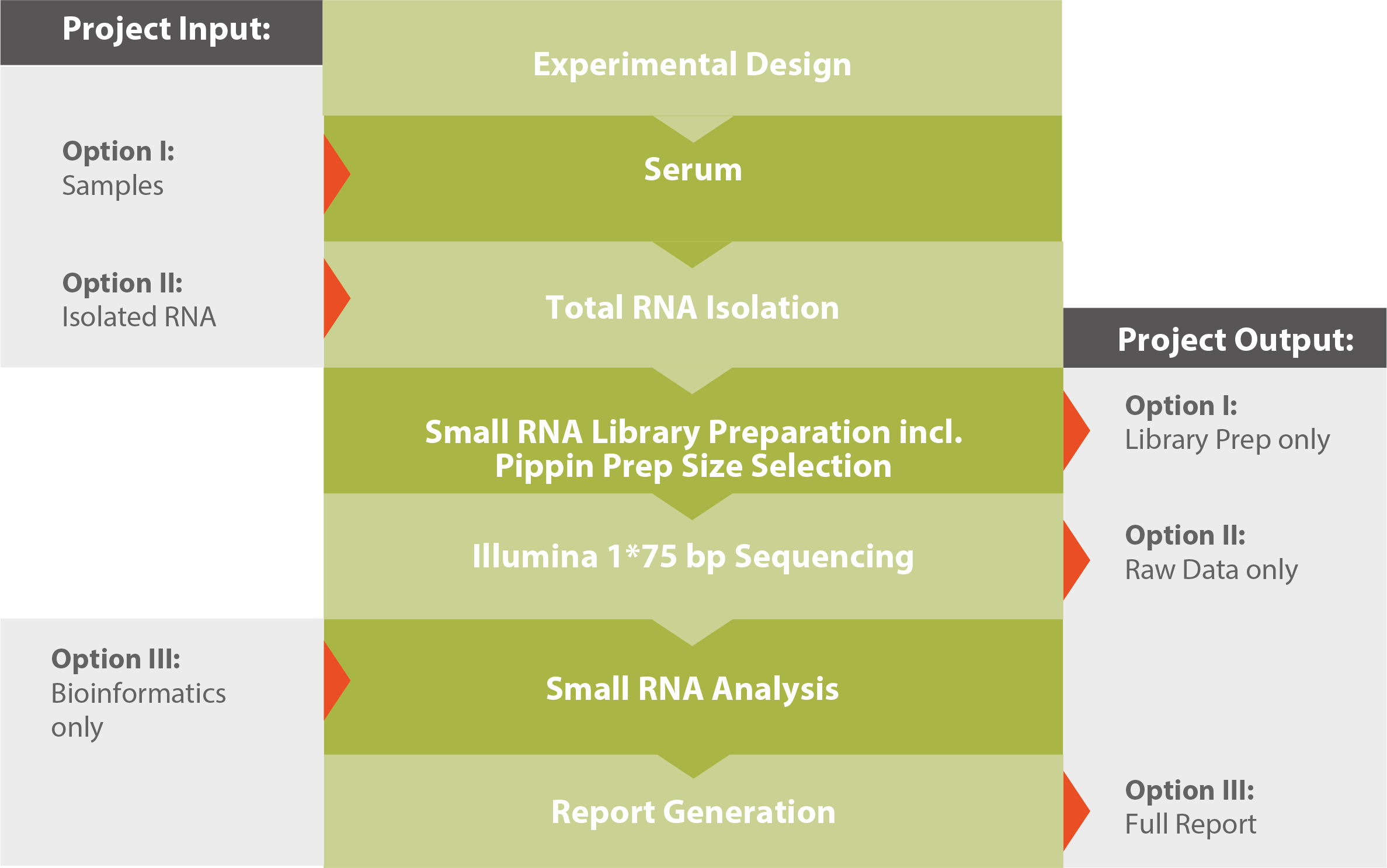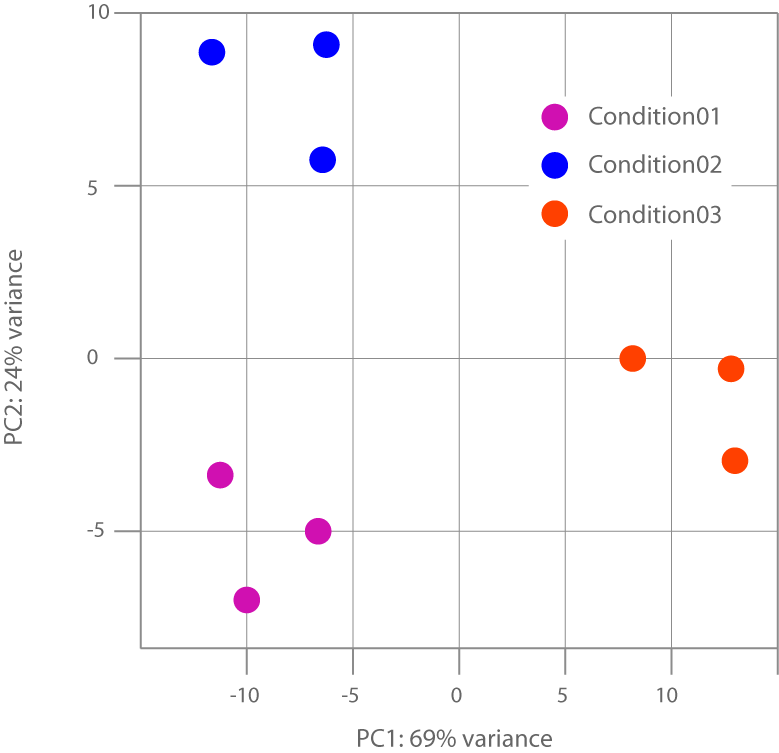
Back to top
Small and microRNA Sequencing

Use small RNA sequencing to:
- Study the influence of non-coding RNA on gene expression patterns
- Discover new regulatory elements and processes
Small RNA Seq is the companion of RNA Sequencing from basic research to new therapeutic approaches.
Overview
Considerations before starting a small RNA Sequencing project:
- Small RNA fraction, expected sizes?
- Sample types (Serum, cell types, tissue)?
- Sequencing depth (sensitivity)?
- Replicates (confidence)?
- Novel and or known small RNA types?
- Model organism or no database entries available?
Let us guide you – from design to analysis
Example projects using small RNA Sequencing:
- Posttranslatory regulation studies
- Discovery of new regulatory elements
- Conditional biomarker detection
- Functional experiments to uncover gene regulation
- Part of an omics charcterization
- Drug discovery/ drug target screens/ novel therpeutics
- Discovery of new non coding regulatory RNA
- Tissue specific piRNA and miRNA effects
Applications related to small RNA Sequencing:
- RNA sequencing
Workflow
A typical workflow for a small or miRNA project is shown in the graphic below. Please note that our highly-modular processes allow you various entry and opting out options. If you outsource your entire NGS project to Microsynth or only parts of it is up to you.

For further reading and a detailed technical description, please download our Application Note Small RNA Sequencing (see related downloads).
Results
The results produced by our analysis module help answer three main questions of a miRNA sequencing experiment aiming for instance at finding biomarkers for a specific disease.
- Are there different patterns of miRNA expression in an experiment? (see Figure 1)
- Which of the expressed miRNAs might be novel? (see Table 1)
- Which are the enriched motifs in the miRNA data? (see Figure 2)

Figure 1: This figure shows a Principal Component Analysis (PCA) based on the normalized expression patterns of the analyzed samples and depicts their similarity to each other. Thus helping clarify if the conditions used in the experiment lead to different patterns of miRNA expression.
Turnaround Time
- Delivery of data within 25 working days upon sample receipt (includes library preparation and sequencing)
- Additional 10 working days for data analysis (bioinformatics)
- Express service possible on request



